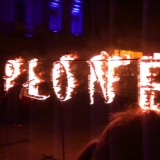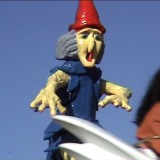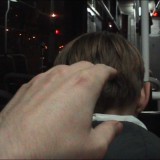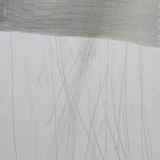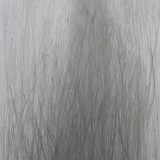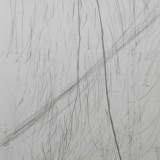Wiktor Polak
Wiktor Polak was born in £ódľ in 1979. Between 1998-2004 he studied in the W≥adys≥aw StrzemiŮski Academy of Fine Arts in £ódľ. He defended his diploma in 2004 in the Studio of Applied Photography run by prof. Grzegorz Przyborek.
Already during his studies he concentrated his interests on video art, which resulted in films directed and shot by the artist in the public environment (street, market, railway station, city transport, housing complexes) or in the private sphere (the artist’s apartment and studio). The protagonist of the films is the artist himself and accidental passers-by / inhabitants / passengers are spontaneously included in apparently strange actions. The aim of the works is the examination of the reactions of contemporary persons towards unexpected physical stimuli, or the context of the arranged situation which often spontaneously slips out of the artist’s control.
Wiktor Polak is not afraid of the artistic risk, for example effort, pain, critical comments or even the aggression of the viewers. He operates with a minimalist means of expression, both in the video and the audio sphere; by using a long, most often static frame he concentrates the attention of the viewer on one specific place, a prop, an action or a statement. He sometimes uses multiplication and repetition, the acceleration of and action or the trembling or blurring of an action which dematerialises the time and space. He doesn’t like being put into a category, although his art certainly has its roots in conceptual traditions, sometimes touching the Dadaist and surrealist absurd and accidental, sometimes a pastiche.
The artist courageously uses his nudity, not to shock the viewer with his sexuality but to pay attention to the essence of the matter, the core of the problem. A good example of this is the film Retkinia from 2005 in which Wiktor is sitting naked among his stuffed animals and reading in front of the camera from his childhood diary. In this way he confronts the mentality of a boy with the body and voice of an adult man, making us aware of the processes of time passing and psychophysical changes, which we all experience. By removing his clothing he tries to enter the role of every-man who experiences the feelings which are known to all of us, although the title of the movie Retkinia – the name of a family housing complex suggests a personal and intimate situation. In another film One cannot breathe using a hare (2007) he was laying down and breathing the air in and out of a plastic toy which in the end turned out to be empty and useless, just like many of our dreams and imaginations, not only from childhood. The artist reveals the motif of a childhood fetish – sweets in the film Santa Claus, small Santa Claus and a clown (2007). Statically framed chocolate figures were destroyed slowly and their fragments in inexplicable ways disappeared or melted, which was shown using cuts and montage.
The workshop experiments are interesting, but not the most important element of the videos by Wiktor Polak. He intensifies visual effects using them as in the work Long hallway (2005) in which he shot an entire movie walking with the camera, which caused a disturbing waving and trembling of the image or At the Academy in which he accelerated the action of the movie, skipping some fragments which showed the artist putting hats on his head on top of each other and gloves on his right hand. The effect of the layering of similar effects led to the absurd; one of many to which we are exposed in everyday life, the artist seems to say. The absurdity of apparent ridiculousness and the so called collective wisdom Wiktor Polak exposes in the consciously exaggerated video Four jokes about strawberries (2008). As in many of his movies – he sits naked in front of a centrally placed camera, which he turns on and off himself using a remote control. Methodically reading the same joke, he brutally strips it out of irony and wittiness and at the same time, suggests that human life if also such a unfunny joke.
The appearance of reality is another important motif in the art by this artist who questions the role and meaning of virtual advertising, the internet, multimedia etc. For example in the work Space presented during £ódľ Biennale 2006. The screen saver was zoomed in to a macro-scale and visually resembled a cyberspace in which the shadow of a random person – a viewer is reflected, who is less and less able to see the difference between virtual fiction and reality. The work is maybe even more actual from today’s perspective with the development of multimedia technologies.
Artistic risk adapts to various forms within the works by Wiktor Polak. One of them is treating one’s own body as a tool in a film plot. This is what happens in the movie Three falls (2007) – the naked artist rocks on an ordinary chair and painfully falls three times, not hiding his physical suffering in front of the camera. It is interesting if the title occurred before or after the work was completed? The artist undertook another type of risk, a confrontation with people’s reactions in the movie Close from 2008, presented in 2010 in the Centre Pompidou in Paris during the exhibition Metamorphose. Using the city transportation – trams and buses, he tried to reach a physical contact with the passengers: sitting on a back or side seat, he touched the hair and clothes of unaware people, who were often sleeping. They sometimes reacted in an aggressive way. In this way he underlined the loneliness and alienation of an individual who helplessly searches for a relationship with another human being. A physical touch grows into a symbol of lost closeness in the time of progressing globalisation.
The motif of an anonymous urban space, mainly using his hometown of £ódľ, although it could have been any other city on the world, is another important aspect of video art by Wiktor Polak. The fist time he undertook this theme was in the movie Environment shot with Agnieszka Chojnacka in 2004. It also showed up in the films: Charts (the movie was bought by the Art Museum in £ódľ as part of the Signs of Time project of the ZachÍta National Art Gallery in 2004), the turpist and absurd films Display cabinet from 2008 and 2009, the impressive installation I’m burning in 2012 (which was an interesting part of the Light Move Festival in Piotrkowska St.) and the visually surreal Walk from 2012. Two films from 2013 form a continuation of urban penetrations Road and Railway Station. The latter was shot with the help of the grant from the City Hall in £ódľ. Road, as the title suggests shows subsequent stages of the road and frames showing crumpled bed sheets, an empty chair, sitting on a tram. The author is physically present and at the same time absent with his spirit – we see his reflection in a tram window, reading and not paying attention to the surrounding reality. He is more active in the Railway Station in which he plays the role of a reporter and asked people questions about where they go, about the surroundings, the way they see £ódľ. He gave up the video, just showing a blurred background with individual frames shown and concentrates the viewer’s attention on the sounds of life within the railway station: the whistle of the locomotive, the announcements through the megaphone and people’s statements: positive and negative. The voices of subsequent respondents and their anonymous comments do not allow the viewer to place the events in one specific space and time, forcing the viewer to use his imagination. It’s worth mentioning, that as part of the grant he also shot the Trip of a Pole to Vienna, in which he played auto-ironically with the ambiguity of his own last name (Polak = Pole).
A distance and irony towards intrusive aesthetics and the commercialisation of the surrounding reality and contemporary art, is the best summary of Wiktor Polak’s actions, especially those undertaken in the public space. As he said himself, he creates a kind of psychological video, focused on reflecting the problems of a contemporary human being, examining the condition of the individual in the crowd of accidental society and our reactions and behaviours towards apparently simple phenomena and situations. It is a deeply humanist art, positive in its message, but ambiguous in interpretation, which is its additional value. On the other side of Wiktor’s art are situated his personal, abstract pencil drawings– expressive lines of various intensities, thickness and angles. It’s a visualisation of the artist’s thoughts and at the same time an interesting counterpart to his video art practice.
Monika Nowakowska


